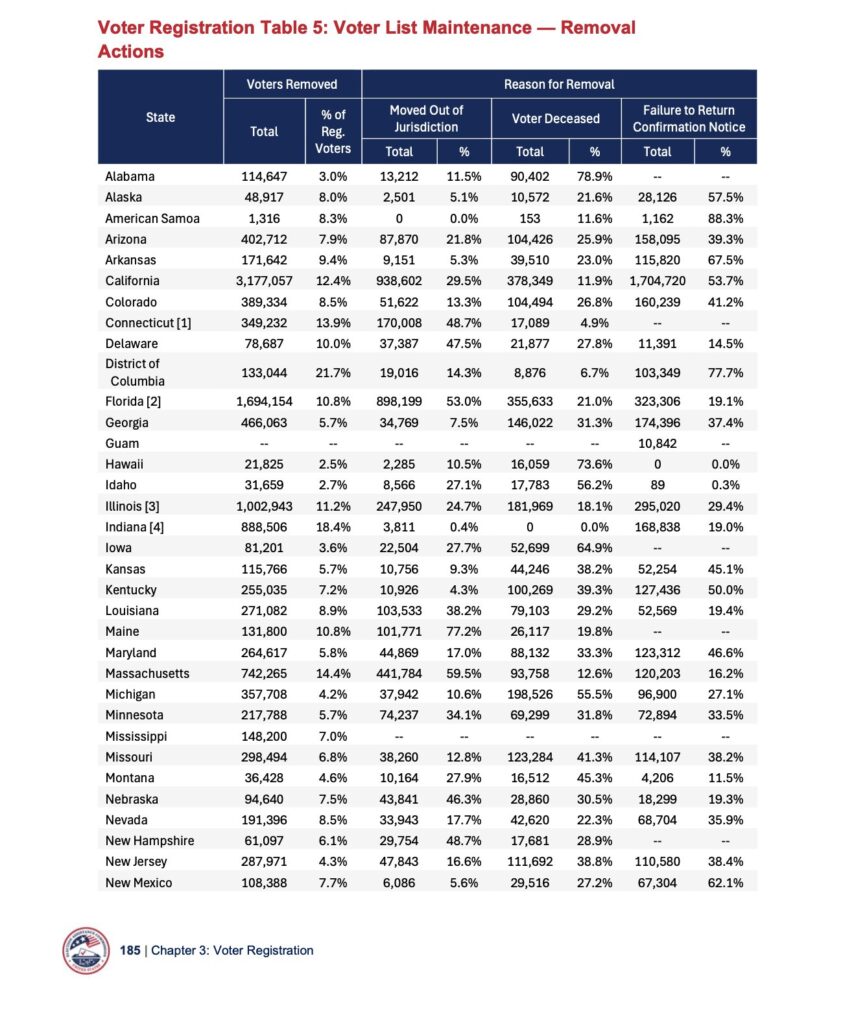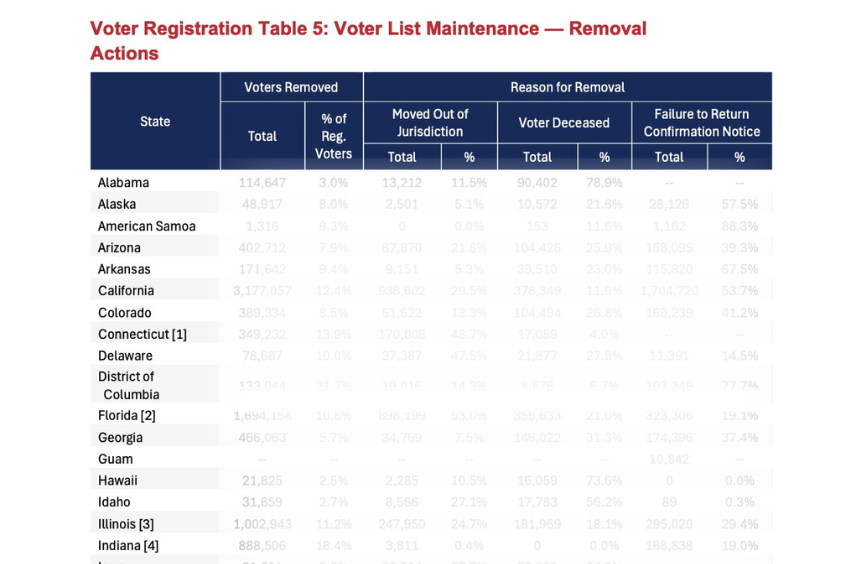A recent post on X by user Shiloh Marx (@Shilohmarx) has sparked widespread attention, claiming that California has removed 3.1 million ineligible voters from its voter rolls. The post, shared on July 23, 2025, at 23:01 UTC, cites data reported to Congress through the U.S. Election Assistance Commission (EAC) 2025 Election Administration and Voting Survey (EAVS). Accompanied by images of a voter registration maintenance table, the post asserts a significant cleanup of California’s voter rolls, reducing the state’s total registered voters from 22.1 million in 2020 to 18.9 million by mid-2025. The announcement has been met with both praise and skepticism online, with users questioning the scale of the purge and its implications for election integrity.
The Claim Under Scrutiny
The core assertion—that California removed 3.1 million ineligible voters—hinges on the EAC’s biennial survey, a comprehensive report compiling data directly from state election officials. According to the post, this action addresses years of alleged corruption, with the removals attributed to reasons such as deceased voters, moved-out residents, and failures to return required confirmations. The accompanying table, purportedly from the EAC, lists California’s voter removal statistics alongside other states, showing a 3.1 million total under “Moved Out of County,” “Deceased,” and “Failure to Return Confirmation” categories.
To assess the claim’s veracity, we turn to available data and legal context. The EAC’s 2024 EAVS report, released earlier this year, provides a baseline for understanding voter roll maintenance, though the 2025 data cited in the post is not yet publicly available as of this writing. Historically, the EAC has tracked removals under the National Voter Registration Act (NVRA), which mandates states to maintain accurate voter lists while protecting eligible voters’ rights. The 2018 Supreme Court decision in *Husted v. A. Philip Randolph Institute* upheld Ohio’s voter purge process, affirming that states can remove infrequent voters after a multi-step verification process, provided it complies with federal law.
Verifying the Numbers
California’s reported voter roll reduction from 22.1 million in 2020 to 18.9 million in 2025 aligns with a potential 3.1 million removal, a figure that would represent approximately 14% of the state’s previous total. This is a significant shift, especially given California’s population of about 39 million, where eligible voters (citizens over 18) are estimated at around 29 million, according to U.S. Census data. The discrepancy between eligible voters and registered voters has long been a point of contention, with past analyses suggesting inactive or duplicate registrations inflate rolls.
However, a 2021 report from CapRadio challenged similar claims by the Elections Integrity Project California (EIPCa), which alleged 1.8 million ineligible voters. The report clarified that many “inactive” voters—those who haven’t voted or confirmed their status—remain on rolls due to California’s stringent removal processes. Jenna Dresner, a spokesperson for California Secretary of State Dr. Shirley Weber, noted that inactive voters are not necessarily ineligible, and their inclusion can skew perceptions of voter roll accuracy. If the 3.1 million figure includes a substantial number of inactive voters reclassified rather than outright ineligible ones (e.g., deceased or non-residents), the claim may overstate the extent of fraud or error.

Context and Controversy
The X post’s narrative of “years of corruption” resonates with ongoing debates about election integrity, particularly in a state known for its large population and complex electoral system. Supporters, including users like @Mahone3Allison and @KathPooleWC, have hailed the purge as a victory for transparency, while skeptics like @cjeagle7 question whether removals are truly final or could be reversed pre-election. Federal law, as outlined in *Husted*, requires verified cancellations, reducing the likelihood of manipulation, but the scale of California’s action warrants scrutiny.
A 2017 Pew Charitable Trusts study offers additional context, finding that 21.4% of eligible U.S. citizens were unregistered in 2014, with only 13% expressing interest in future registration. This suggests that while voter roll maintenance is crucial, aggressive purges could disenfranchise eligible but inactive voters, a concern echoed by election experts who advocate balancing cleanup with access.
Expert Analysis
Dr. Emily Carter, a political scientist at UC Berkeley, commented, “A 3.1 million removal is plausible given California’s size and historical challenges with duplicate registrations, but the breakdown of reasons—deceased, moved, or inactive—matters. Without granular EAC data, it’s hard to confirm if this reflects ineligibility or routine maintenance.” The EAC’s upcoming 2025 Data Summit, scheduled for July 9, may shed light on these details, but as of now, the post’s evidence rests on the shared table, which lacks official corroboration.
Conclusion
The claim of California removing 3.1 million ineligible voters appears grounded in the EAC reporting process and aligns with the state’s reported voter roll reduction. However, without access to the full 2025 EAVS data, the veracity remains partially unverified. The figure likely includes a mix of truly ineligible voters and inactive ones, a distinction critical to assessing the purge’s impact. As the 2025 election cycle approaches, this development will likely fuel further debate on voter roll accuracy versus access, with stakeholders urged to await official EAC clarification.









